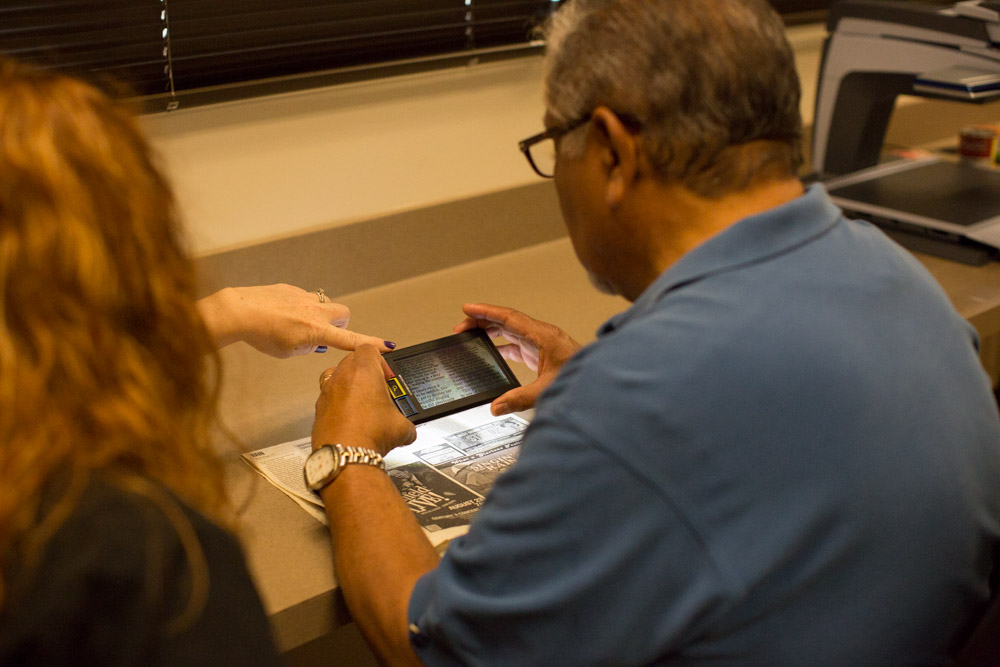Too often, people experiencing age-related vision loss ignore the symptoms, hide them, or try to compensate for them with improvised inventions that fall short of providing true solutions.
But taking a proactive approach to their eye health is the best way to remain active and able to participate in a full life.
“For aging individuals, pride may get in the way of addressing health issues, including deterioration of vision,” said Clark Stevens, senior director of rehabilitative services at Wichita-based Envision, which has locations in 11 states and provides employment and low vision rehabilitation services and programs to people who are blind or visually impaired. “There are more low vision rehabilitation options than ever that minimize the effects of vision loss and allow individuals to stay engaged in their everyday, essential activities.
Seeking out low vision rehabilitation, adaptive aids and assistive technology is the key. Dr. Donald C. Fletcher, ophthalmologist and medical director of the Bicknell Envision Vision Rehabilitation Center, notes that the longer it takes older adults to visit eyecare experts and begin low vision rehabilitation, the more likely they are to suffer permanent damage.
“Early detection and early action are critical factors in tackling vision loss and limiting its impact on a person’s life,” Dr. Fletcher said. “This isn’t only about warning people to protect the vision they have or pointing them toward surgical solutions to correct what they’ve lost or are at risk of losing. It’s also about familiarizing them as early as possible with technology and techniques that can help them compensate for lost vision and keep them self-sufficient and active.”
Low vision rehabilitation teaches ways to “see past” a vision disability and builds self-sufficiency and self-confidence through orientation and mobility training (using white canes, taking public transportation, preventing falls), occupational and physical therapy, behavioral health, Braille education, assistive technology instruction (magnifiers, smart phones, text-to-voice computer screen readers) and other measures.
So, how can well-intentioned family, friends, co-workers and medical advisors help those they care about confront age-related vision issues in a productive way rather than surrender the lives they’ve enjoyed? Stevens suggests talking to them about the benefits and realities of low vision rehabilitation and helping them see a new future full of potential. Key points include:
• Don’t assume a diagnosis of vision loss means you must sacrifice your independence – Help is available for people with visual impairments brought on by many common eye diseases, including: diabetic retinopathy; age related macular degeneration, retinitis pigmentosa, cataracts and glaucoma.
• You don’t have to give up doing what you love – From phones and clocks with enlarged numbers and bright displays to labeling accessories to reflective products and more, there are an array of adaptive devices on the market that contribute to independent living. An understanding of assistive technology and lighting can help individuals gain or retain access to computers, stay competitive in the workforce and tap into the many resources the internet has to offer. In addition, not-for-profit organizations like Envision offer arts, music and support programs that keep people with visual impairments engaged in their favorite pastimes (or learning something new) and connect them with others who share their passions and personal experiences.
• Inquire about low vision rehabilitation – Ask your primary care or vision care provider for a referral to a low vision specialist who can create a customized care plan tailored to your specific needs. The Envision Vision Rehabilitation Center has partners throughout the country and can connect people with low vision to rehabilitation services in their area. More information is available at
envisionus.com or by calling (866) 319-4646.
“We hear so many stories from adults with vision loss who can once again participate in the activities of daily living because of low vision rehabilitation,” Stevens said.









